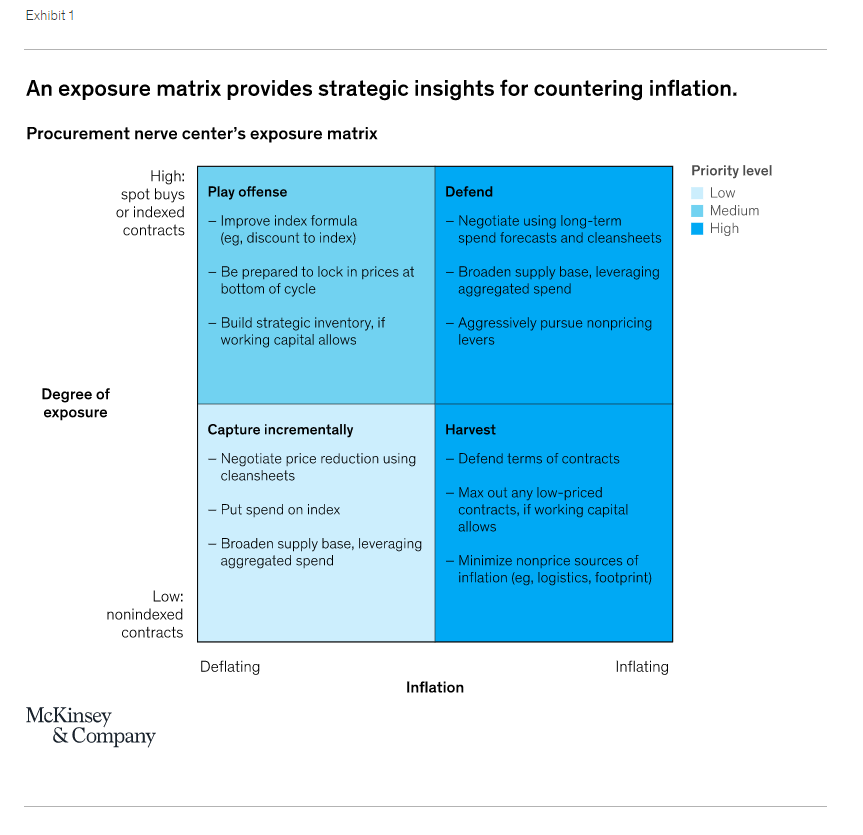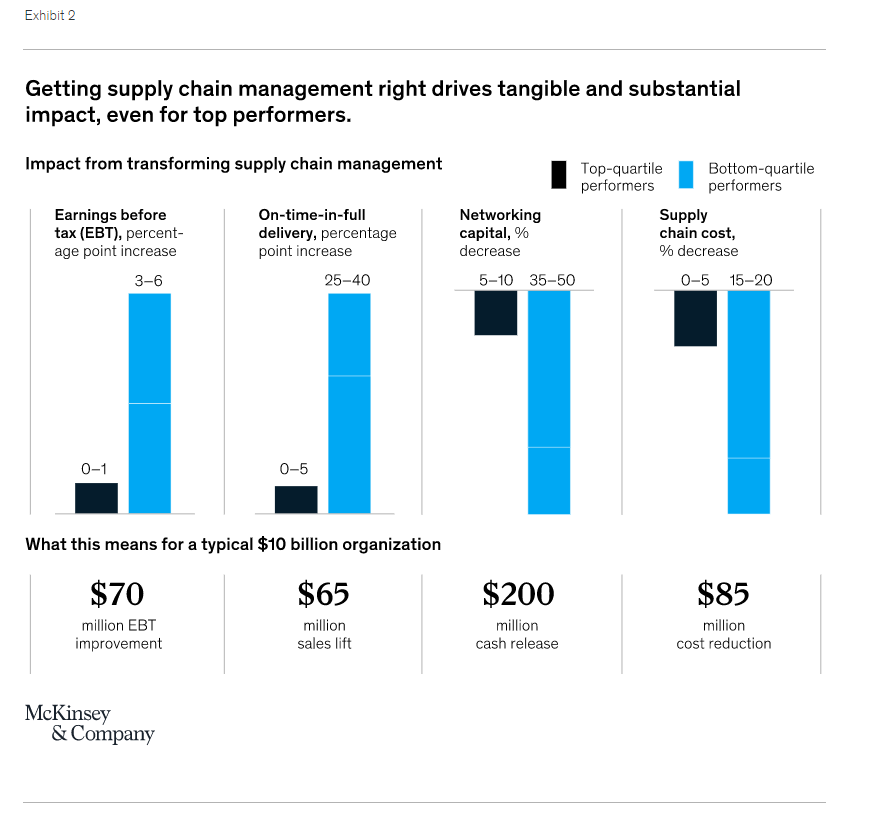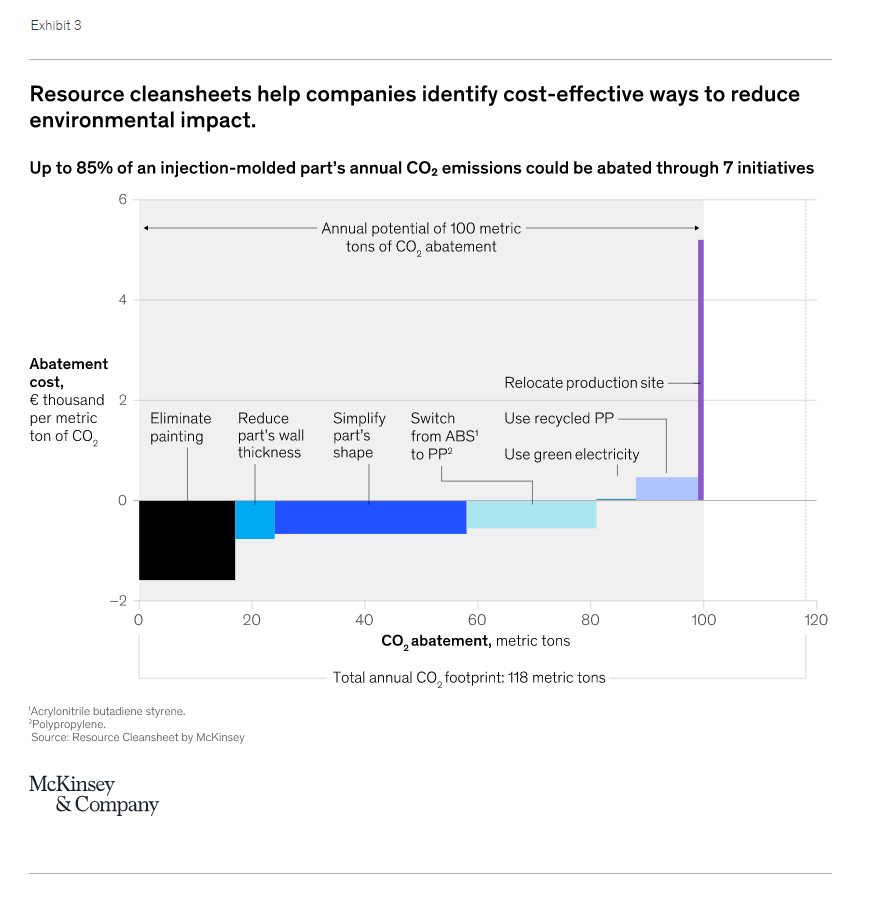Value, speed, and scale: A new era for operations in Asia
Value, speed, and scale: A new era for operations in Asia
Courtesy of McKinsey & Company
By Svenja Coeckelberghs, Denise Lee, Robert Mathis, and Joseph Tesvic

As Asia moves into the third year of the pandemic—against the backdrop of geopolitical and climate emergencies—inflation, scarcity, and volatility have become the new normal. While estimates vary on the amplitude and duration of this wave, virtually no one predicts a smooth landing.
The companies that thrive in the mid-21st century and beyond may be those that rethink and reshape their business practices now. CEOs need to make strategic choices in the face of these mounting uncertainties. And they need to mobilize their organizations to drive the end-to-end execution of those choices, which will require aspiration setting and role modeling from the very top. The organizations that get this right will be more adaptable, more resilient, and more sustainable—no matter what the future holds.
Asia holds the key
Asia is set to take center stage in this reinvention, for two big reasons. First, the region’s economies will continue to drive global growth. Investment in Asia has tripled over the past ten years, for example. The region was the destination for more than $1 of every $2 of new net investment in the past decade. Asia is on track to account for 40 percent of the world’s consumption and more than 50 percent of global GDP by 2040.
Second, Asia has the resources, capabilities, and ambition to drive change. The region is home to the largest and most important players in multiple industry sectors, from semiconductors and renewable-energy technologies to electronics-manufacturing services. Asian organizations have already pioneered many of the approaches that define world-class business practices today, from lean manufacturing to global business services.
Opportunities, complexities
While Asia offers an unmatched strategic opportunity, it also presents unparalleled operational complexities. The region is one of the most economically diverse in the world, with significant inequalities in income, education, and access to healthcare. And its energy-intensive, manufacturing-led economies must find a way to navigate the transition to a net-zero world.
We believe, however, that Asia’s dynamism, its existing economic strength, and its deep untapped potential make it an ideal environment for business innovation. For forward-thinking CEOs, Asia could be the proving ground for new business practices that can offer solutions to the major challenges of the next decade and beyond:
1. Energy, component, and raw-material prices are rising at their fastest rate in more than four decades. How can organizations respond to inflation and secure access to the physical resources they need?
2. Supply chain disruptions cost the average organization almost half of one year’s profits over the course of a decade. How can companies secure their supply chains to mitigate these costs?
3. Eliminating greenhouse-gas emissions will require companies to make significant tactical and strategic changes and will account for much of an additional $130 trillion in global expenditure on capital assets by 2030. How can companies turn the net-zero transition into lasting competitive advantage?
4. The COVID-19 crisis forced companies across Asia (and the world) to compress years of planned digitization into just a few months. How can the region’s digital leaders maintain, or even accelerate, the speed and scale of that revolution and capture the most value from it?
5. Automation and digitization are transforming many roles. In China, Japan, and India, remote work, automation, and digitization will lead 70 million people to move to new occupations in the coming years. How can organizations prepare their workforce for this new world?
In this article, we examine the implications of these themes for companies across Asia. We will see how leading organizations are already transforming their business operations in response, turning challenges into new sources of value and sustainable competitive advantage.
Beat inflation without frustrating your customers
In the first months of 2022, it became increasingly apparent that inflation rates would remain well above the approximate 2 percent that planners have come to expect for some time. Instead of just raising prices where they can (and losing margin where they can’t), leading companies are finding more sophisticated responses to inflation that allow them to maximize value creation (Exhibit 1).

These new approaches are driven by data and analytics. AI-enabled cleansheet cost analysis techniques can reveal how inflationary pressures feed into supply prices, for example. One Indian manufacturer of air-conditioning equipment used product teardowns and AI-enabled cleansheet cost modeling to determine that a supplier was overemphasizing the impact of rising raw-material costs. That finding helped the company renegotiate prices with its supplier, turning a request for a price increase of 6 percent—attributed to raw-material inflation and currency fluctuation—into a 2 to 3 percent price reduction. The analysis also paved the way for a series of design changes, conducted in collaboration with the supplier, which helped capture another 7 to 8 percent cost savings potential.
Rich data also help procurement and product development teams to capture value-improvement opportunities beyond price. The tech-enabled design-to-value (DtV) approach involves collaborating with customers or suppliers to optimize specifications or find ways to reduce the consumption of scarce materials. When one Asian manufacturer of parts for consumer electronics products faced severe semiconductor shortages, it worked with its customers to extend its forecast window from three months to 12, helping to secure forward capacity of critical components. Closer collaboration also helped to cut the qualification time for alternative designs from months to weeks, making it easier to identify new suppliers.
Toughen up brittle supply chains
At too many organizations, knowledge of the situation at direct suppliers is patchy, and understanding of the deeper “tier-n” supply chain is practically nonexistent. To fill these gaps, leading companies are now building digital supply chain control towers by integrating data from across the supply chain and beyond, developing new analytics capabilities and establishing a centralized, cross-functional organization to accelerate decision making and response. One leading manufacturing-services player from Asia used this approach to monitor and mitigate issues across its supply chain during the COVID-19 pandemic. While volumes fell during the crisis, the company’s ability to avoid shortages and control material and logistics cost inflation meant that its margins increased.
Leading companies are building digital supply chain control towers by integrating data from across the supply chain and beyond to accelerate decision making.
The collection of data intelligence, along with pattern analysis over time, allows for accurate forecasting and intervention if there are problems along the supply chain. This provides much better information and more accurate forecasting when people make decisions about buying, making, and selling products. For example, a hardware retailer uses Internet of Things (IoT) solutions to keep track of product orders and shipping times. IoT sensors enable real-time point-of-sale analysis so that retailers can replenish their inventory systems more quickly and reduce inventory holding costs.
Getting supply chain management right generates a wide range of benefits (Exhibit 2), and new advantages are emerging all the time. For instance, leading companies are also taking steps to simultaneously improve the resilience and the sustainability of their supply chains. Apple wants companies in its upstream supply chain, which is concentrated in Asia, to achieve carbon neutrality by 2030. The steps needed to achieve that goal—including a switch to renewable energy, significant waste reduction, and greater use of recycled materials—will also reduce the supply chain’s exposure to energy and material price volatility.

Get to net zero, on time and on budget
As action to address climate change becomes a priority for governments, consumers, and investors alike, companies now have a dual mission of maintaining profitability while improving the sustainability of their end-to-end value chain.
For manufacturers, especially in process industries ranging from energy and mining to pharmaceuticals and packaged food, there’s still much to achieve in reducing scopes 1 and 2 emissions. As in other sectors, these companies are realizing that the journey to sustainability requires a holistic approach, combining actions both in the boardroom and on the shop floor. Resource cleansheets are helping organizations to prioritize the most cost-effective ways to reduce the environmental impact of their products, for example (Exhibit 3). One chemicals company has been running a shop-floor-driven energy-efficiency program for a decade, and its teams are still finding new improvement opportunities every year. Such results give CEOs room to make “moon shot” investments in entirely different products, processes, or geographies.

The drive to improve environmental sustainability won’t just affect supply chains. Between now and 2027, the world will see a once-in-a-lifetime wave of capital spending on physical assets. This surge of investment—amounting to roughly $130 trillion—will flood into projects globally, in many instances to decarbonize and renew critical infrastructure and dismantle outdated carbon-era assets. More than half of that investment—over $70 trillion—will be in Asia.
In big infrastructure projects, long delays and busted budgets are the norm. On average, cost overruns approach $1.2 billion—79 percent of the initial budget—and schedules slip by six months to two years. The world can’t afford waste and delay on that scale. To avoid it, some companies are already applying a holistic “Projects 5.0” approach to their capital strategies, leveraging data and analytics to improve the process from design to delivery.
In public infrastructure, for example, utility companies have started to shift toward a long-term partnership model. They offer contractors the opportunity to bid for a portfolio of projects instead of a single project. This model builds trust between owners and contractors, allows the development of joint and repeatable operating models, and offers an incentive for contractors to supply relevant resources and skills to satisfy the contract terms. After a learning curve, projects are delivered faster, with greater accuracy and less owner involvement. Best-in-class players agree on improvement trajectories as an ecosystem, driving the unit cost of decarbonization lower for each release.
To read the full article, please visit https://www.mckinsey.com/business-functions/operations/our-insights/value-speed-and-scale-a-new-era-for-operations-in-asia
About the author(s)
Svenja Coeckelberghs is a practice manager in McKinsey’s Melbourne office, Denise Lee is a partner in the Taipei office, Robert Mathis is a senior partner in the Tokyo office, and Joseph Tesvic is a senior partner in the Sydney office.
The authors wish to thank Gemma Corke, K Ganesh, Tip Huizenga, Vikas Prasoon, Rasika Ramesh, and Christina Wang for their contributions to this article.
|











